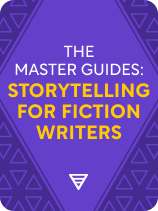

This article is an excerpt from the Shortform book guide to "The Master Guides: Storytelling for Fiction Writers" by Shortform. Shortform has the world's best summaries and analyses of books you should be reading.
Like this article? Sign up for a free trial here.
What difference can symbolism make in a story? When and how is it appropriate and functional?
Each story should have a protagonist with a goal, obstacles to the protagonist’s goal, and a theme. But, above and beyond those basic elements, you should infuse complexity into a story to make it more compelling and interesting. Symbolism is one way to do this.
Keep reading to get advice from Stephen King and Thomas C. Foster on how and when to use symbolism in a story.
Symbolism in a Story
One way you can add complexity to your story is with symbolism: the use of an object or word to represent an idea other than its literal meaning. In his book On Writing, Stephen King states that you can use symbolism in a story as a focusing device, reinforcing your story’s central theme. Don’t decide on your symbols before you write the story—according to King; it’ll feel artificial. Instead, unearth the symbol as you write your story. When you revise, look for symbols you can bring out and refine, as though you were excavating and polishing a gem.
For instance, in Carrie, King noticed only after writing that blood perfused the story. It appeared at the beginning (when Carrie has her period), at the climax (in a prank in which Carrie was doused with pig’s blood), and at the end (where a survivor of Carrie’s wrath has her own period). King wasn’t conscious of this pattern while writing, but he found it meaningful when reading back over the story. Throughout the story, he tried to connect blood to its many connotations—sacrifice, women’s coming of age, and heredity.
That said, don’t assume that filling your story with symbols will automatically make it interesting to the audience. In his book How to Read Literature Like a Professor, Thomas C. Foster warns that a symbol’s literal meaning within the narrative will always be its primary purpose, and its metaphorical meaning is secondary to that. If a novel is unsuccessful at telling the story, no amount of symbolism will change that. On the other hand, if a novel presents a great story and a variety of figurative symbols and imagery, that’s a sign of a great piece of literature.
Exercise: Analyze a Story
Pick a story you’re familiar with. What symbols can you identify in the story, and what might they represent (in relation to the theme)? (For example, Monsters, Inc. is arguably about how members of an out-group are relatable and lovable once we get to know them. Through this lens, the corporation of “Monsters, Incorporated” could represent all human-created institutions that maintain a division between “us” and “them,” like a two-party political system.)

———End of Preview———
Like what you just read? Read the rest of the world's best book summary and analysis of Shortform's "The Master Guides: Storytelling for Fiction Writers" at Shortform.
Here's what you'll find in our full The Master Guides: Storytelling for Fiction Writers summary:
- How to capture and communicate emotional magic through fiction
- Advice from successful authors and storytelling experts
- The five steps of writing a story, from ideating to publishing






